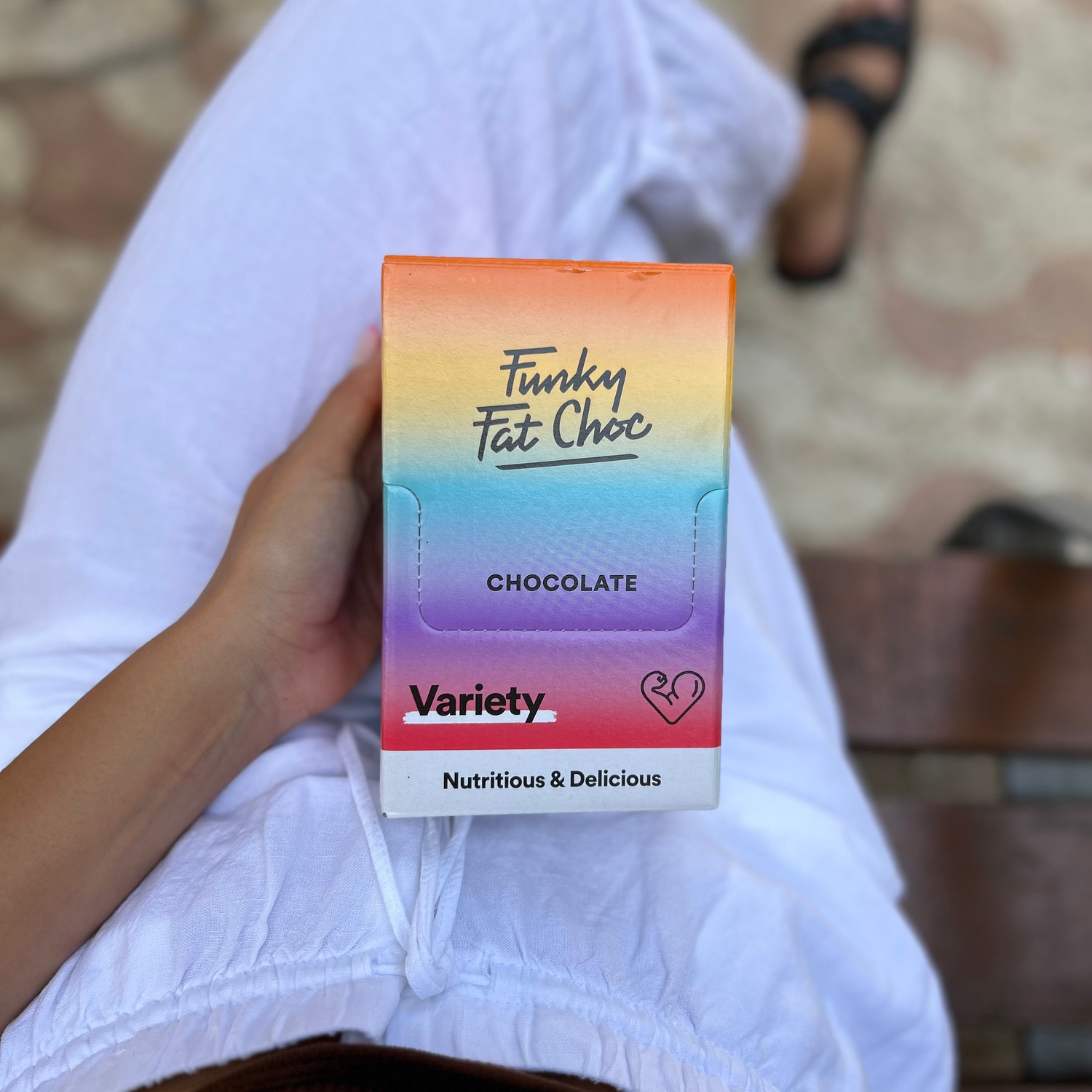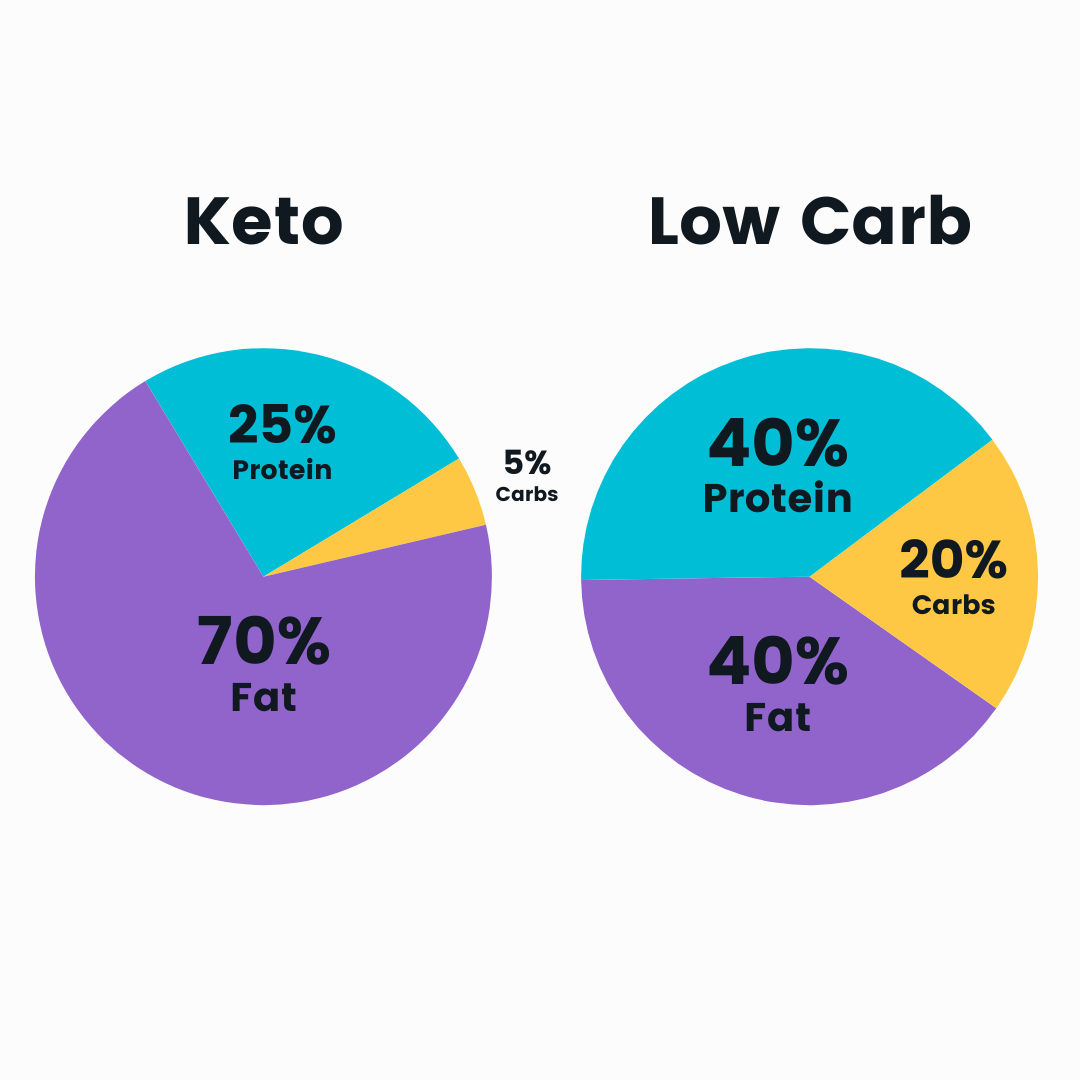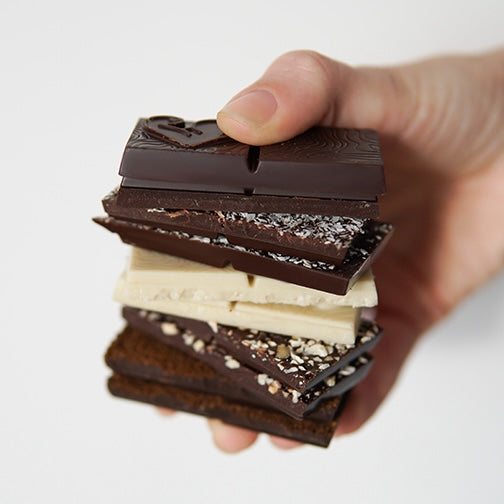Sugar-free chocolate has been a growing trend in the last few years making chocolate more accessible to individuals with dietary restrictions or who want to enjoy sugar-free sweet snacks without them affecting their blood sugar. However, are they all truly healthy? And most importantly, does being sugar-free mean they don't spike your blood sugar?
In today’s article we want to explore the world of sugar-free chocolate and its impact on your health, because, as you can imagine, not all sugar-free chocolates are created equal thus not all are healthy for you.
What is sugar-free chocolate?
The name is pretty much self explanatory, but this type of chocolate is manufactured without adding any sugar. Instead of using sugar, they add what are known as sugar substitutes. Some of the most commonly known are erythritol, stevia, monk fruit, maltitol, sucralose, xylitol, or aspartame.
People choose to go for a sugar-free chocolate because they are lower in calories and have less impact on blood-sugar levels than sugar does, making these alternatives more suitable for certain people.
Health benefits of sugar-free chocolate in general terms
In very broad and general terms, sugar-free chocolate can offer a few health benefits compared to traditional chocolate with sugar.
Lower blood sugar impact
Sugar free chocolate typically uses alternative sweeteners like stevia or erythritol, which have a lower glycemic index than sugar. Take into consideration that not all sweeteners have a 0GI and therefore, some, like maltitol, do still cause blood sugar spikes. Take a look at our list of best and worst sweeteners. For people with diabetes, the best options are erythritol or stevia as they can be sure that they won't be affecting their blood sugar levels.
 Weight management
Weight management
Dental health
Ingredients to watch out for
As we’ve mentioned earlier, not all sugar free chocolates are created equal. There are ones with poor quality ingredients that, despite being sugar-free, should be avoided on a regular basis due to its ingredients and the effect it has on our bodies. We’ve prepared a list of ingredients you should watch out for when looking for sugar free chocolates.
Some artificial sweeteners
Artificial sweeteners such as aspartame, sucralose, xylitol, sorbitol, isomalt, and saccharin should be avoided because of several reasons:
- Some studies show they may disrupt metabolic processes
- They have also been linked to altering gut microbiota which can influence insulin sensitivity and glucose metabolism
- Can cause digestive distress like bloating and diarrhea when consumed in large amounts
- Some have been linked to petroleum derivatives too
Sometimes, in lower quality chocolates, the sweeteners are often used in conjunction with other sweeteners, so even though in the packaging it might say Stevia in big, read the small letters, it could say "with Stevia" and then the main ingredient be maltitol (which is most of the cases).
Hydrogenated oils
- Palm oil
- Sunflower seed oil
- Rapeseed oil
- Soybean oil
These are the most commonly used in sugar-free chocolates and should be avoided at all costs. They contain trans fats, which are harmful to heart health, since they can raise ldl cholesterol levels which increase the risk of heart disease. Also palm oil, often used for its low cost, can be a concern due to its environmental impact and potential health effects if not sustainably sourced.
Artificial flavours and colours
Synthetic additives like artificial flavours and colours can be harmful long term and can cause headaches, allergic reactions and other health issues. Artificial flavours are great indicators of lower-quality ingredients. Artificial colours are generally unnecessary in chocolate yet they're many times added to make the chocolate more appealing to consumers and can be associated with several health concerns.
Preservatives
Even though preservatives are used to extend shelf life, some of them like BHA and BHT have been linked to potential health risks. Also Sodium Benzoate is often used in processed foods and can be pretty harmful consumed in large amounts.
Low-quality Cocoa
Look for chocolates that use high-quality cocoa solids or cocoa mass rather than low-quality cocoa powder, which may have undergone extensive processing and may lack the beneficial flavonoids found in higher quality chocolate.
Which are the best sugar-free chocolates?
Now that you know what ingredients should not be in your chocolate, let’s talk about the ones that should be and that will make your eating chocolate a whole new experience of healthy eats.
The first ingredient should be cocoa mass or cocoa butter
High quality chocolates have a high cocoa percentage. Look for chocolate with at least 70% cocoa content. The higher the cocoa content, the more antioxidants and the less room for fillers and unwanted ingredients.
Choose natural sweeteners
For example erythritol, stevia, or monk fruit are the best. These have a lower impact on blood sugar and are safe to consume on a daily basis but always in conservative quantities.
In our Funky Fat Chocolates we use organic erythritol because it has a 0 GI (glycemic index), it’s easily digested, helps hydrate your colon, and protects the intestinal tissue. Last, but not least, it has antioxidant properties fighting oxidative stress and preventing cancer, diabetes, and heart disease.

Check for high quality fats
When reading the label of a high-quality chocolate bar you should check for quality fats. The best chocolates use cocoa butter as the primary fat, which is a heart-healthy fat that supports your brain health, boosts your mood, and even helps lower blood cholesterol levels. Besides that, the beans contain vitamin E to help improve your vision, brain function, skin health, and blood circulation. Including it in your diet can decrease inflammation and help reduce the risk of cardiovascular disease, lowering LDL levels and increasing HDL, diabetes, and/or stroke. In our chocolates we also add MCT oil to make it more nutritious dense, since it helps improve mental clarity, performance, and memory and it helps your body feel satisfied for a longer time.
As we’ve mentioned earlier, chocolate should not have any preservatives, this is why our Funky Fat Chocs have none and all of our ingredients are organic and good for you.
Look for certifications, such as Organic or Fair Trade
With these certifications you’ll make sure that your chocolate is less likely to contain pesticides and other harmful chemicals and also that cocoa farmers are paid fairly and work in ethical conditions which often correlates with higher quality chocolate.
With all of this information about sugar-free chocolate you can now make informed choices and take better care of your health without compromising your sweet treat moment of the day.




Leave a comment
All comments are moderated before being published.
This site is protected by hCaptcha and the hCaptcha Privacy Policy and Terms of Service apply.